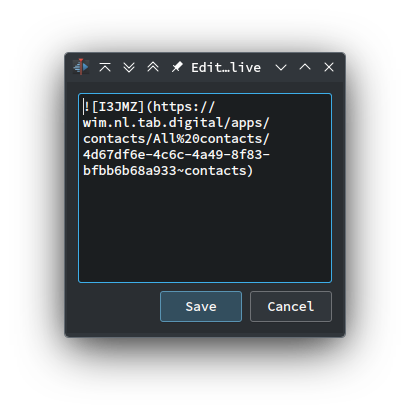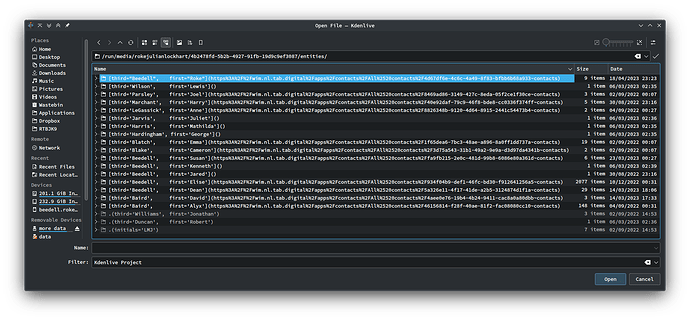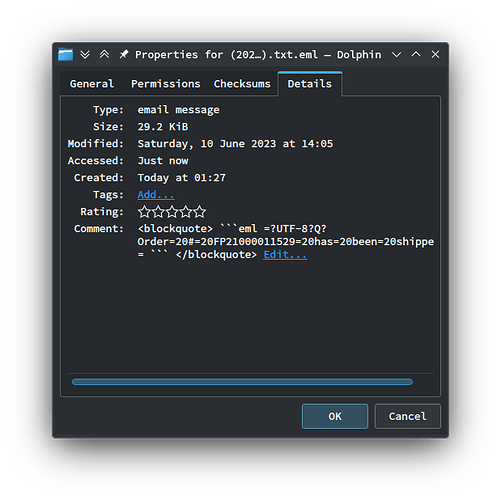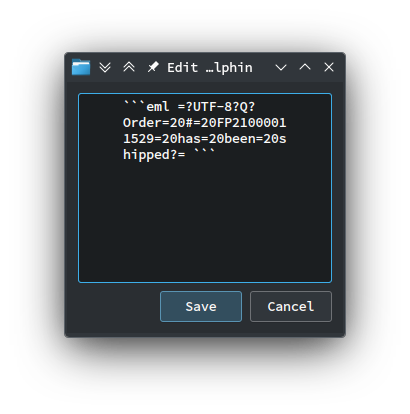Summarily, I think that dolphin should support markdown processing in directory and file Comments and Names because I believe that it would allow some genuinely incredible innovation in file system management.
This is because novice users can use the basic text accentuation that they’re used to (*, **, and >, which Markdown was designed to improve) and have them automatically parsed by Markdown, Markdown support nowadays includes almost full pure HTML support.
Using the Comment property

which is currently sorely underused, would become genuinely viable, since I’d be able to store full notes in it – it’d be just pure text underneath, after all. Plonk the Kate KPart in there, or have inode comments open in the user’s default text editor, and now they’re a popular part of file management.
However, despite the existence of that filesystem-specific property, filenames in Linux are multiline. Nothing fundamental prevents this.
Features
Precedence
It allow non-technical users to want to highlight a file to not have to put ! or A before it (it would instead allow them to bold the filename)
Some more impressive features that are specifically relevant to file storage that I can see it add, however, would be:
#Tags for tag organization
If you’re a bit of an organizational perfectionist like myself, you will know that purely hierarchical organization doesn’t work at scale - search somewhat rectifies this, but it isn’t foolproof, especially for binary files like images.
This brings me onto my next part of this point - although tags are supported by most formats that really need them, it’s always as custom metadata. Just being in parseable XML doesn’t help someone comprehensively programmatically poll for consistent metadata.
This would! tagging would become cross-FS, and as simple as #tag. No need for advanced, finnicky solutions like
which leave .json files around the filesystem, and don’t really automatically update when file operations are performed due to its client not being installable per se (so no index daemon).
Clickable links
No more need for .desktop (or, in my case, since I want cross-platform support, .html) link files on Linux - simply
[obfuscating text](link)
becomes enough, in filename itself!
shows how this can be used. I’ve currently a crude .TSV table in my FS, created using tabs between the first and last names of some people (don’t worry – these names aren’t confidential, I promise, nor are the URIs accessible in any manner). However, each entry into the table isn’t clickable currently. Managing this would be a million times easier if they were.
This wouldn’t impair usability, since the user can just go to the right of the filename to invoke the file.
I know, it’d be a fair bit of work. But I think that it’d put #Dolpin so many lightyears ahead in terms of usability for the average and advanced person that I really, really think that it’s worth considering.
It’s the whole reason I wanna learn Qt. If nobody else does, I’m gonna fork dolphin myself. XD
Thanks for reading this. I hope one day this becomes possible.


